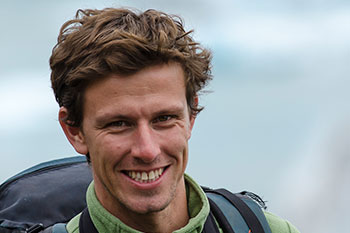
A researcher whose work assesses the conservation challenges and management risks associated with sea level rise has been chosen as Australia’s nominee for the US$25,000 APEC Science Prize for Innovation, Research and Education (ASPIRE).
Dr Nicholas Murray from UNSW Sydney was selected by an expert panel convened by the Australian Academy of Science. He will compete with 20 other scientists from APEC economies for the award.
Dr Murray’s work, combining cloud computing and machine learning to analyse vast archives of satellite data, has helped to conserve ecosystems across the Asia-Pacific.
His research on the global distribution of tidal flats – one of the primary costal ecosystems that fringe the Pacific rim - has led to world-heritage listing nominations, the identification of endangered costal ecosystems and the improved protection of species that move through the Asia-Pacific during their annual migrations.
Dr Murray, along with runner-up Dr Peter Macreadie from Deakin University, and the third placed winner, Dr Jenny Fisher from the University of Wollongong, will receive $2,000 each.
Dr Macreadie was recognised for his work on carbon sequestration in coastal vegetated ecosystems (“blue carbon”) and Dr Fisher for her work on predicting how atmospheric pollutants respond to environment change.
ASPIRE is an annual award which recognises scientists under the age of 40 from the 21 APEC economies who have demonstrated excellence in scientific research, as well as cooperation with scientists from other APEC nations. Chile is hosting the award this year and chose “Natural Laboratories” as the nominating theme. The winner is expected to be announced in August.
Last year’s ASIRE Prize was won by Associate Professor Madhu Bhaskaran from RMIT University. She became only the second Australian to win the prize since the award’s inception in 2011.
© 2026 Australian Academy of Science